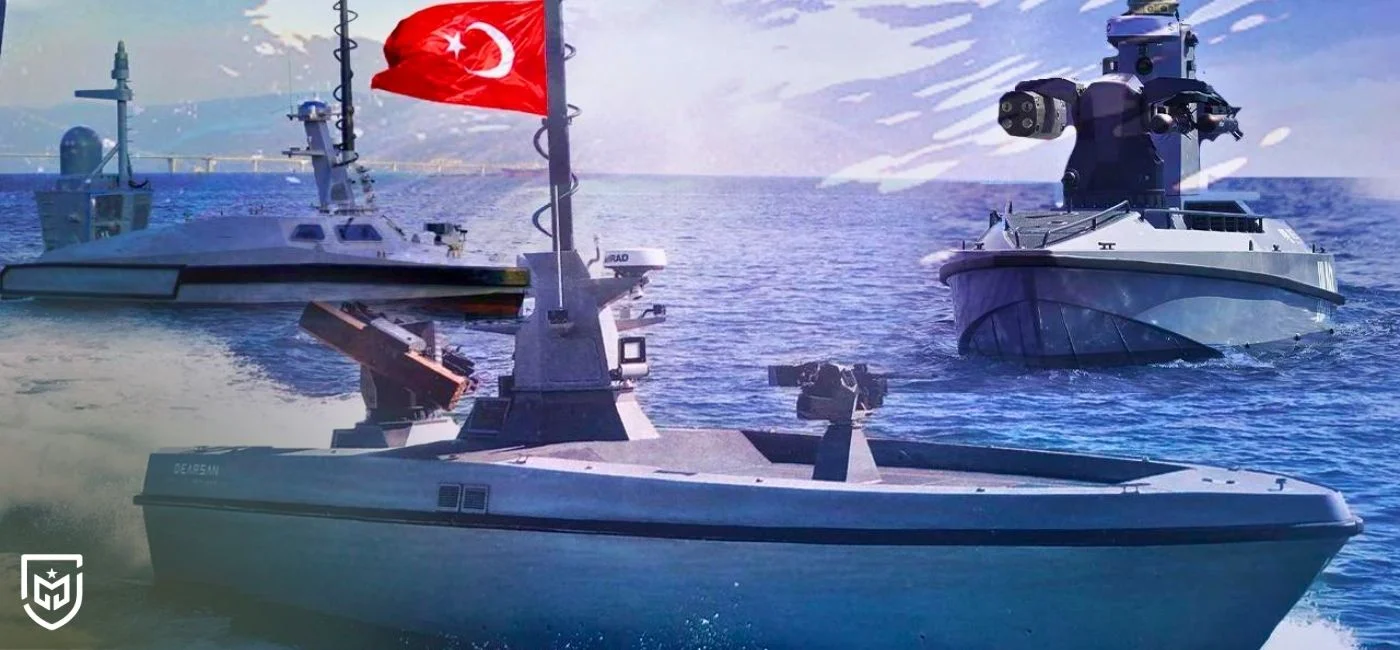

BREAKING NEWS

Türkiye, which has already established a global reputation in unmanned systems, is now advancing into a new chapter at sea. After achieving significant success with UAVs such as Bayraktar TB2, AKINCI and KIZILELMA, the country has increasingly expanded its investments into unmanned surface vessels (SİDA). Today, these platforms are evolving beyond reconnaissance, electronic warfare or strike missions—Türkiye is now working to integrate national air defense missiles into SİDAs, reshaping the naval battlefield with a new layer of protection.
Defense analyst Yusuf Akbaba explains that the rapid global adaptation of unmanned systems, especially highlighted during the Russia-Ukraine war, has forced many countries—including Türkiye—to rethink their naval defense strategies. The vulnerability of large vessels against drone attacks and kamikaze platforms has become impossible to ignore. Türkiye, now operating massive naval assets such as TCG Anadolu and TCG Derya, and preparing for its future national aircraft carrier, is adapting to this reality by enhancing the defensive roles of its SİDA fleet.
Türkiye currently fields a wide variety of unmanned surface vessels produced by different companies, each serving roles ranging from reconnaissance to strike operations. The new phase, however, focuses on integrating air defense missiles into these platforms. Missiles such as Sungur and Çakır are expected to be part of the new SİDA configurations. In the near future, ROKETSAN’s vertical launch systems may even allow the launch of Hisar or SIPER-class air defense missiles from unmanned vessels. Akbaba also notes that the public may soon see test footage of new missile firings from the Marlin SİDA, one of Türkiye’s most advanced platforms.
This transformation goes well beyond protecting large warships. Air-defense-equipped SİDAs will be capable of defending military and civilian ports, critical coastal infrastructure, energy facilities and maritime trade hubs. Compared to traditional naval defense methods, these unmanned vessels offer lower operating costs, greater flexibility and the important advantage of removing human risk from first-contact interception roles. In the future, even Gökdoğan and Bozdoğan—national missiles originally developed for air-to-air engagements—may be adapted for naval use on unmanned platforms.
Radar technology is another major area of expected growth. Türkiye is likely to introduce AESA-radar-equipped SİDAs, providing long-range detection, advanced tracking and early threat response capabilities. Such platforms would form a formidable protective wall against incoming missile, drone or aircraft threats, enabling layered and autonomous defense.
Together, these advancements are shaping a new joint operational doctrine in which manned and unmanned naval platforms work seamlessly as a coordinated task group. Türkiye’s push toward air-defense-capable SİDAs not only strengthens national security but also positions the country at the forefront of next-generation unmanned naval warfare.
Post Comment
Comments
No comments yet.
Related News
U.S. MQ-28 Test Overshadowed by KIZILELMA’s Historic Air-to-Air Missile Success
Ukraine Officially Receives Homegrown Flamingo Long-Range Cruise Missiles
A New Era in the Black Sea: Türkiye Delivers Historic MILGEM Export to Romania
Historic Joint Operation Success from Bayraktar TB3 and Albatros-S in the Blue Homeland
Bayraktar KIZILELMA Becomes the World’s First UAV to Hit a Jet-Powered Target with a Beyond-Visual-Range Air-to-Air Missile
Land News, Missile and Rocket Systems, Electronic Systems, Naval News, Satellite and Space News
Türkiye’s Ramjet Breakthrough: Indigenous Engine Test Places Nation Among a Select Few
Bayraktar KIZILELMA Locks Onto F-16: Historic Simulated GÖKDOĞAN Test Achieves Direct Hit